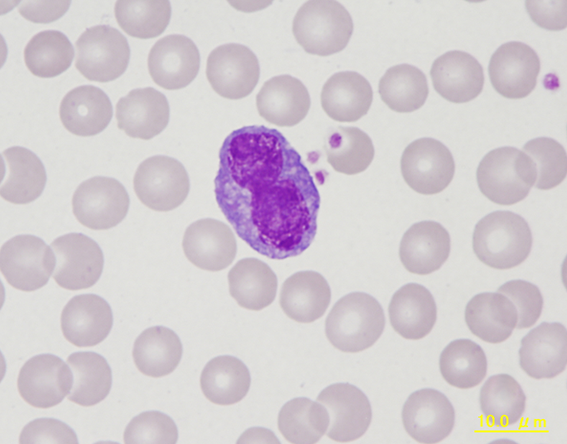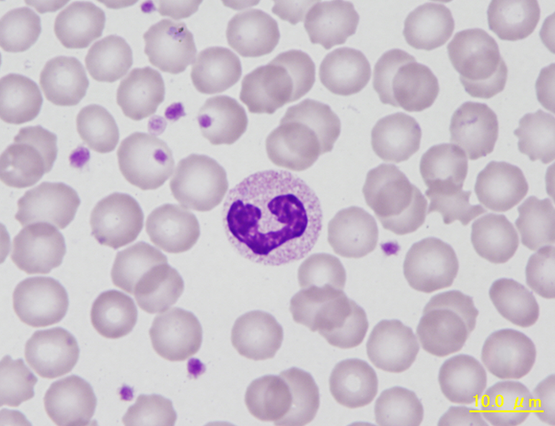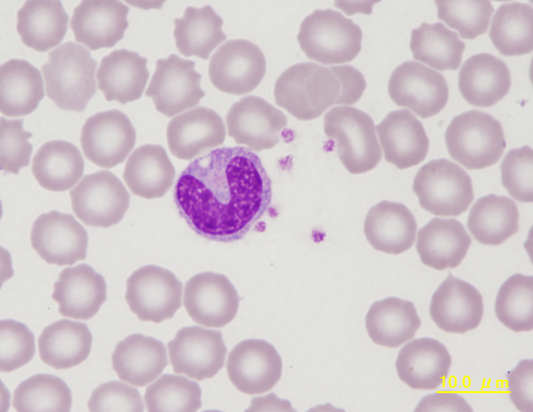Scientific Image Gallery
Welcome to our Scientific Image Gallery. Here you can find real-life examples of cell images, mostly (but not only) from peripheral blood films, that illustrate typical morphologic characteristics pointing to specific conditions or disorders. This constitutes their diagnostic value.
Click on an image to enlarge it and display a short description.
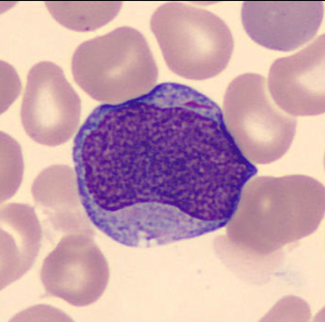
The first microscopically identifiable cell of granulocytic cell line.
Cell description:
Size: 12-20 µm
Nucleus: large, round or slightly oval with diffuse chromatin pattern and often 1-5 nucleoli
Cytoplasm: pale blue and usually agranular, sometimes Auer rods visible
<p>The first microscopically identifiable cell of granulocytic cell line. </p> <p>Cell description: </p> <p>Size: 12-20 µm </p> <p>Nucleus: large, round or slightly oval with diffuse chromatin pattern and often 1-5 nucleoli </p> <p>Cytoplasm: pale blue and usually agranular, sometimes Auer rods visible</p>

In this maturation stage the separation into the 3 different subpopulations of granulocytes occurs by development of specific granulation for each (secondary granulation).
Cell description:
Size: 10-18 µm
Nucleus: oval or slightly indented with variable degree of chromatin clumping, nucleoli usually not apparent
Cytoplasm: acidophilic neutrophil: primary azurophilic and secondary neutrophilic granules
<p>In this maturation stage the separation into the 3 different subpopulations of granulocytes occurs by development of specific granulation for each (secondary granulation). </p> <p>Cell description: </p> <p>Size: 10-18 µm </p> <p>Nucleus: oval or slightly indented with variable degree of chromatin clumping, nucleoli usually not apparent </p> <p>Cytoplasm: acidophilic neutrophil: primary azurophilic and secondary neutrophilic granules</p>

Atypical lymphocyte with a large in size and intensely blue staining cytoplasm. Atypical lymphocytes are defined as lymphocytes responding to antigenic stimuli.
<p>Atypical lymphocyte with a large in size and intensely blue staining cytoplasm. Atypical lymphocytes are defined as lymphocytes responding to antigenic stimuli. </p>
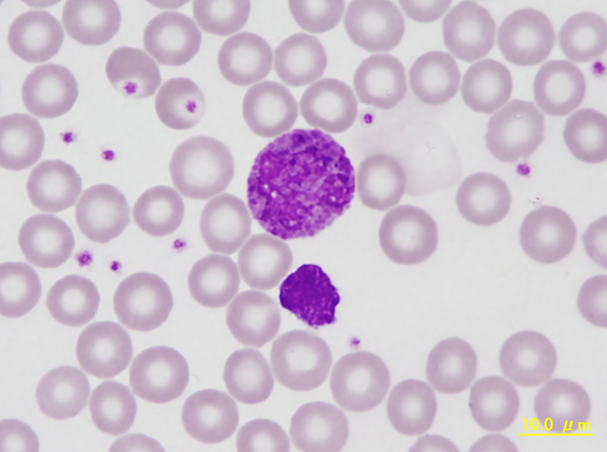
Basophil with intensely blue-purple and greyish blue granules, partially superimposing the nucleus. Below there is a bare nucleus of a lymphocyte.
<p>Basophil with intensely blue-purple and greyish blue granules, partially superimposing the nucleus. Below there is a bare nucleus of a lymphocyte.</p>
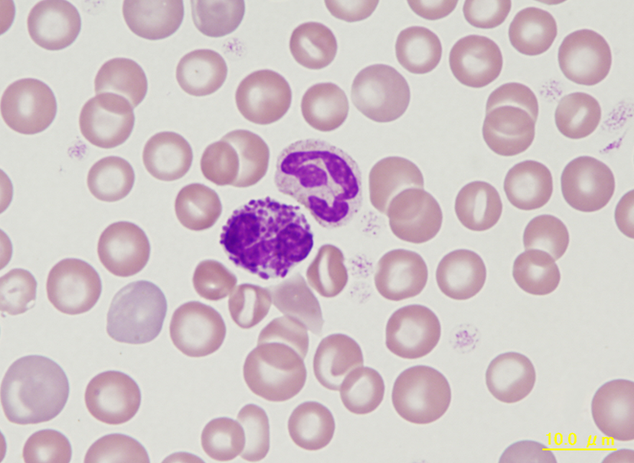
Blood smear of a marmoset showing a basophil with numerous, clearly visible purple staining granules next to a segmented neutrophil. Besides the commonly seen anisocytosis there are two large polychromatic red blood cells in the lower left.
<p>Blood smear of a marmoset showing a basophil with numerous, clearly visible purple staining granules next to a segmented neutrophil. Besides the commonly seen anisocytosis there are two large polychromatic red blood cells in the lower left.</p>
